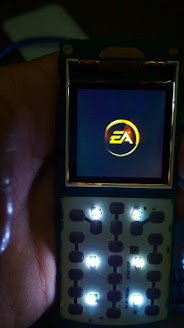In the previous article about logisim software review we have almost seen all the aspects of the original logisim software, and now we will see some variants of logisim which have evolved due to logisim being open-source( one of the most beautiful feature of an open-source software is evolution, development by other people than the main author )
So here we will see all the available variants and their plus points of being a logisim variant, the links of the software, I am not providing here but you can comment down, if you don't find it on internet, but there is 99% chance that if you write their proper name and google search it you will definitely find it.
So, first of all we have Logisim Italian version(Logisim-ITA.jar), well it is not italian only, but also has english language, it is compiled with the most recent version of JAVA and hence receives updates, patches and stays almost updated and can be run on any modern OS without fail.
The most noticeable feature of this variant is, it has all the 74xx libraries built in and an Oscilloscope built it which is very very helpful in debugging circuits as we can see digital waveform in real time as like in real world, of course that DSO is not very fast or has limitations but it is better than noting, also it has buzzers and other more RGB led as I/O which makes it more interactive.
Also like the generic version, it has all the help built in for extra added items and also it has very good developer support.
Next version comes the logism IITD version, as we can see that it is the IIT Delhi version and the most notable feature of this version is the inbuilt IEEE floating point support, that's it there is nothing extra more in this version.
Next comes the logisim evolution variant, this is the most helpful one for transforming a design or a simulation into a real world CPU, as it supports translating the design into VHDL and supports a lot of low cost FPGAs with cheap toolchain support and thus can help in transferring our design into real practical world and make it work on the FPGA.
It is almost like the original logisim but, has a lot more going on inside, it has complete help for translating to VHDL or writing backend VHDL and simulating it, it has support for a large number of example and cheap FPGA boards which can take our VHDL and reprogram the FPGA.

Next comes the cs3410 version, it is nothing new but the generic version in development, whose original development was halted by the author and is now no more supported, it is basically useless to use it as main software for project as it was in development stage and not in release stage, so we can skip it.
So, at last, if I would have to say that which version is the best, I would say it would be Logisim-ITA as it is written and maintained in current JAVA version and also it has some extra feature such as fitting the whole diagram in window easily and zoom and scaling and panning and also it has a DSO which can help a lot in difficult times, Other one variant if any one likes VHDL or has FPGA boards is the Logisim evolution, this version is the best for transferring the design from computer to real world but the only problem is you need a FPGA board compatible, also evolution has some issues with leading leagy logisim generic files, so Logisim-ITA is best.

























































